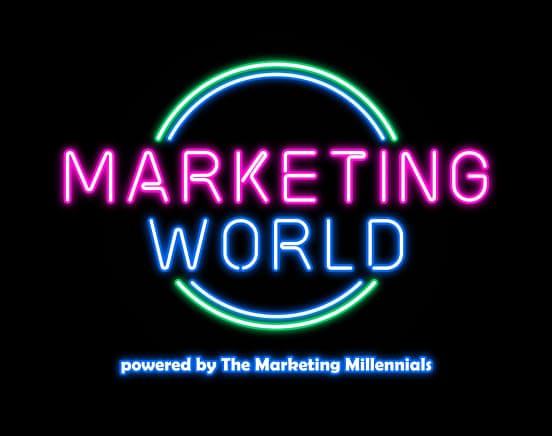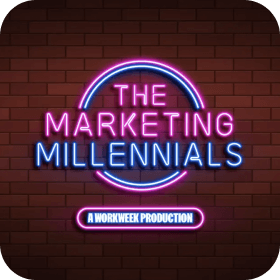I am ECSTATIC for you to meet today’s guest, Ross Simmonds.
The CEO of Foundation, a content marketing firm working with the most influential brands in Saas and B2B, Ross is a content ICON.
Let’s dive into how you can create content that shapes culture and see what Ross had to say on The Marketing Millennials Podcast (in his own liiiiightly edited words).
1. All great content falls into these categories:
“Great content falls into four simple categories: educational, engaging, entertaining, or empowering.
No matter if you’re talking to moms, CFOs, or digital marketers, they want content that’s going to educate them on new things or provide insights into new topics.
That falls into educational content.
They also want engaging content. Humans like dialogue, we want to be interacted with.
Create content that is engaging in nature, lures people in through personal stories, opinion pieces, or by ruffling the feathers and saying something that’s controversial (like breakfast being the best meal of the day).
The next type is entertaining content. We all want to laugh. We all want to feel good.
But it doesn’t always have to be laughter.
Entertainment can be anger. If you evoke anger in people, that is great content. If you can leverage pop culture in memes to inspire people, that too is entertainment.
The fourth type is empowering content.
Create content that celebrates, showcases, or elevates other people.
If you can empower other people with your own brand and voice, you have the opportunity to tap into their network because they’re going share it, and it will give you the chance to build a tribe.
2. Importance of content user fit:
User fit is understanding your audience. Spend the time to discover what stories and topics motivate them.
Go into communities where your audience is hanging out, learn about them, and give them content that will resonate.
Level up your marketing game
Zero BS. Just fun, unfiltered, industry insights with the game-changers behind some of the coolest companies from around the globe.
No spam. Unsubscribe any time.
For example, if you’re going after a service provider audience, MSPs, it’s a very small segment of the tech world, but there’s a subreddit that has over 200,000 MSPs subscribed to it.
If you need to create content for that group of people, you’re not just going to drink a whiskey and come up with ideas off the top of your head.
You’re have to go into their community and sort the content by top posts.
Then analyze what stories resonated with the community time and time again. Use that for insight around the type of story you need to give back to them.
You can do this on Twitter, Quora, or Facebook groups and immerse yourself in the space.
3. The mindset you need as a creator:
If you do things that are easy, you’re going to blend in with everybody else.
It doesn’t have to be hard. You don’t have to put in the work.
You can do the exact same as everyone else in your industry and be comfortable being mediocre.
OR you can acknowledge the fact that doing hard things is what leads to the greatest breakthroughs in content (LOVE this).
I would be a liar if I stood up here and said creating great content is easy.
If it was easy, there would be 1 million Mr. Beasts in the world, but instead there’s one.
That’s because he invested in creating content that requires research to understand your audience, what moves people, and the psychology of content.
You should take that as a badge of honor rather than something that you look at and say, I don’t want to do it because it’s difficult.
Imagine you walk in for a surgery and the doctor said, no it’s going to be too hard. We can’t, we can’t fix you. You’d be pissed.
This doctor spent their entire life to build up a skillset so they can do hard things.
As marketers and creators, we should be encouraged and feel empowered to take on hard tasks, like creating very, very, very good content.
4. The best media companies do this:
You need to ensure that the stories that you’re creating and the messages that you’re putting out are actually worth sharing.
Oftentimes we’ll press publish on a piece of content and say our job is done. We’ll pop a bottle of bubbly (or Diet Coke) and say, look at us we’re great.
No.
Creating good content is table stakes. Today, you’re supposed to create great content.
You don’t get brownie points for creating good content.
If you’re a content marketer, your job is to create good content that leads to results, and the next step is to distribute that content.
This is where the industry has fallen through the cracks. We’re talking about creating more content, writing more content, and developing more videos.
You need to think like a media company and produce.
The best media companies prioritize distribution across the board.
Disney doesn’t create a movie and hope people watch it. They amplify it. They remix the Old Lion King and turn it into a new Lion King with Beyonce and Childish Gambino. They bring it to life with new stories, people, and graphics.
(Fav disney movie?? Mine is The Good Dinosaur)
Our industry is being sold the idea that you just need a content calendar with a few blog post ideas in a Google sheet and that’s your strategy.
That’s not enough. You have to know where your audience is. You have to understand how these stories are going to spread.
5. How many platforms you should use:
It’s better to be excellent on one channel than mediocre across everything.
If you’re a solopreneur or an early stage startup, find excellence on one channel and then move to the next.
Once you’ve established content, user fit, content channel fit, and you know that you can leverage that channel to drive results, move on to the next one.
If you are a company that is already at scale and has a presence on Twitter, LinkedIn, and Facebook.
You don’t have the luxury of being able to say, let’s focus on this one specific niche.
You have to go in with excellence applied to multiple channels. Start building content distribution and creation strategies that are isolated to those channels.
Every organization’s approach is going to be different, but if you’re large, start at scale trying to crack excellence across all of the channels that you invested in.
6. BONUS TIP: What YOU should do for 2023:
You’re probably reading this and you’re like, I would love to do all of these things, but I have a content calendar that has me required to produce five pieces a month.
Stop doing that. Stop creating five pieces a month.
If you don’t have time to amplify and distribute the content that you are creating, you are literally wasting your time. You’re not investing enough time into distribution.
(This got me so fired up, bc it’s SO true!)
Most people created enough content last year.
Go back into your archives. Look at the pieces you created in 2022 and start amplifying them again.
Repackage and re-share, because you can get similar results as to creating a brand new piece of content.
Instead of getting into the challenge of needing to create, scale back on your creation and increase your distribution.”



